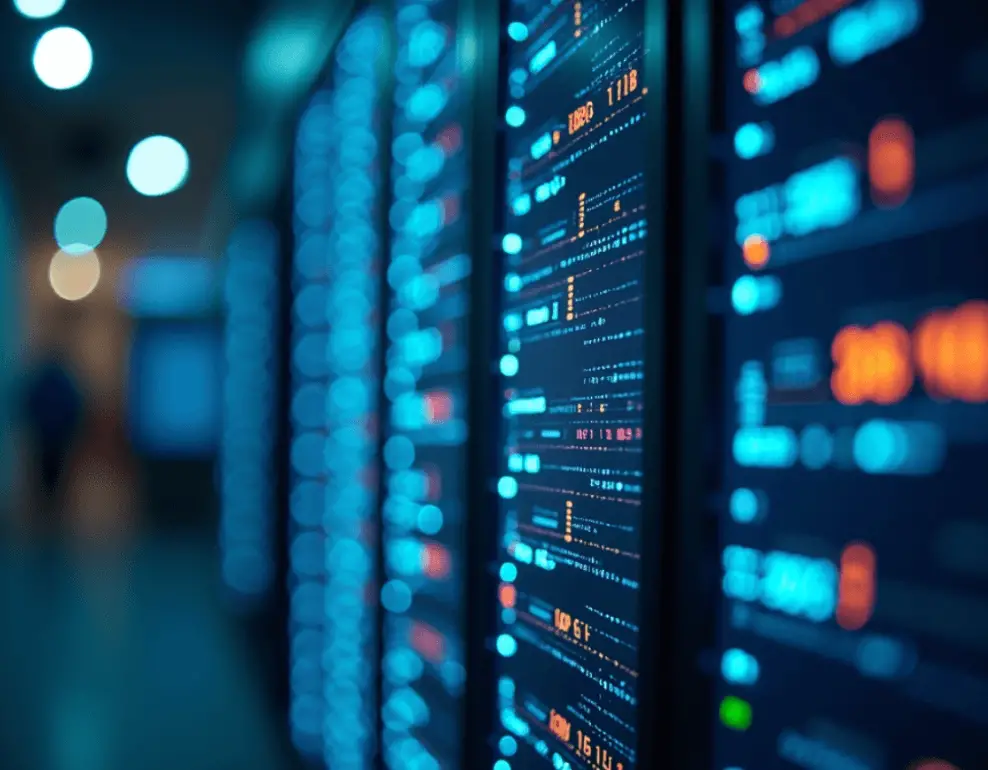An IP address is like a digital home address that helps computers talk to each other on the Internet. Just as your house needs a unique address for mail delivery, every device connected to the internet needs a special number called an IP address.
The address 70.228.123.178 is an example of an IPv4 address, which is made up of four groups of numbers separated by dots. When you connect to the internet through providers like AT&T, they give your network an IP address that works like your network’s identity card.
Think of it as a return address on a letter – it tells other computers where to send information back to you.
While this address can tell us some basic things like which Internet Service Provider you’re using or roughly where you are in the world, it can’t reveal private details about your actual device.
It’s important to know that one IP address can be shared by many devices in your home, just like how multiple people can live at the same street address.
This system helps keep the internet organized while protecting your privacy, making sure that while computers can find each other, your personal information stays safe.
Understanding IP Fundamentals
IP Address Structure
An IP address serves as a unique digital identifier for devices on networks. The IPv4 format uses a 32-bit structure divided into four octets, like 192.168.1.1, while IPv6 employs a 128-bit format using hexadecimal numbers.
The IPv4 system can create about 4.3 billion unique addresses, whereas IPv6 can generate an astronomical 340 undecillion addresses.
IPv4 vs IPv6 Comparison
The adoption of IPv6 has grown significantly, with Google reporting that nearly 45% of users accessed their services via IPv6 in December 2023, up from just 2.5% ten years ago.
IPv6 offers improved features like built-in security through IPSEC and simplified routing headers. The header size in IPv6 is fixed at 40 bytes, compared to the variable 20-60 bytes in IPv4.
Dynamic vs Static Allocation
Dynamic IP addresses are temporarily assigned by DHCP servers and can change when you restart your router. They’re perfect for home users and offer better security since changing addresses make devices harder to track.
In contrast, static IP addresses remain constant and are manually configured, making them ideal for hosting servers and business applications.
Network Management
IP addresses contain two key components: a network identifier and a host identifier. Networks are divided into classes based on their first octet:
- Class A: 1-126
- Class B: 128-191
- Class C: 192-223
This classification helps in efficient network management and routing of data packets across the internet.
Network Information
ISP and Location Details
The IP address 70.228.123.178 is registered to AT&T, one of America’s largest internet service providers. This address is located in the United States, though its exact location can vary between major cities like Dallas or Phoenix.
Connection Types
AT&T offers several connection options for this network:
AT&T Fiber: Delivers speeds up to 5 Gbps with unlimited data
AT&T Internet: Provides up to 100 Mbps with a 1.5 TB data cap
AT&T Internet Air: Offers 40-140 Mbps speeds
Network Architecture
The network utilizes two primary technologies:
- IPBB (Internet Protocol Broadband): A hybrid system combining fiber and DSL infrastructure
- Fiber-optic: Pure fiber connections using light pulses for data transmission
Technical Infrastructure
AT&T’s network employs advanced features including:
- Software-Defined Networking (SDN) controlling 100% of data traffic
- 400-gigabit optical connections between major cities
- Multi-Access Edge Computing (MEC) for enhanced local processing
- Network Edge Computing (NEC) for secure cloud integration
The network supports both IPv4 and IPv6 protocols, with this particular address using the IPv4 format. Through Network Address Translation (NAT), multiple devices can share this single IP address, making it versatile for both residential and business use.
Device Identification Limitations
Privacy Constraints
Device identification faces significant challenges in today’s interconnected world. The ability to track and identify users through their devices poses substantial privacy risks, particularly when dealing with IoT devices and resource-constrained hardware.
These devices often lack standardized security features and may expose sensitive user data.
NAT Technology Impact
Network Address Translation (NAT) allows multiple devices to share a single public IP address, making individual device identification more complex. When numerous devices use the same IP address, it becomes challenging to:
Track specific device activities
Implement accurate security measures
Maintain consistent performance levels
Multiple Device Sharing Challenges
The widespread use of shared IP addresses creates several complications:
- Performance issues due to multiple users accessing resources simultaneously
- Reputation problems when malicious activities from one device affect others
- Authentication difficulties in identifying specific devices behind NAT
Security Protocol Limitations
Modern security measures face several constraints:
- Traditional NAC protocols struggle with IoT device management
- Authentication systems often can’t handle devices without user interfaces
- Shadow devices may bypass security measures entirely
Technical Solutions
To address these limitations, organizations implement:
Multi-factor authentication for enhanced security
Device fingerprinting techniques
Network segmentation to isolate different types of devices
The challenge of balancing security with privacy continues to evolve, especially as CG-NAT systems become more prevalent in broadband networks. Organizations must adapt their security strategies to account for these limitations while maintaining user privacy and network security.
Alternative Identification Methods
Hardware Identification
A MAC address serves as a device’s physical identifier, consisting of 12 hexadecimal digits that uniquely identify network interfaces. Unlike IP addresses, MAC addresses are hardcoded during manufacturing and remain constant for local network identification.
User Agent Detection
User agent strings act as digital ID cards, providing detailed information about browsers, operating systems, and devices.
Recent studies show that user agent-based identification can accurately identify up to 33.6% of devices uniquely, though this rate varies significantly between desktop and mobile devices.
Network Scanning Methods
Two primary fingerprinting approaches exist:
- Active fingerprinting: Directly collects hardware information from client machines
- Passive fingerprinting: Analyzes TCP/IP configurations and protocol parameters without client interaction
Advanced Fingerprinting Techniques
Modern device fingerprinting employs several sophisticated methods:
- Canvas fingerprinting: Identifies devices by analyzing how they render HTML5 graphics
- Browser fingerprinting: Creates unique device profiles using combinations of hardware and software attributes
Effectiveness Metrics
Research from a major French website analyzing over 2 million fingerprints revealed:
Desktop devices: 87.9% of collected fingerprints
Mobile devices: 12.1% of fingerprints
Unique fingerprints: Only 33.6% overall, significantly lower than previous studies suggesting 80%
These identification methods continue evolving, with newer techniques focusing on behavioral patterns and device-specific characteristics to improve accuracy while maintaining user privacy.
Privacy and Security Aspects
Data Protection Framework
Modern data protection requires multiple security layers. Organizations must implement encryption for data both at rest and in transit, while using data minimization practices to collect only essential information.
Privacy-enhancing technologies (PETs) help analyze and share data while maintaining strict privacy controls.
Security Protocols
Key security measures include:
- Transport Layer Security (TLS) 1.3 for faster, more secure communications
- Secure Shell (SSH) for protected remote access
- WPA3 for wireless network protection
Legal Requirements
The California Privacy Rights Act (CPRA) sets strict standards with penalties up to:
- $2,500 for unintentional violations
- $7,500 for intentional violations or those involving minors
User Rights and Controls
Modern privacy frameworks guarantee several user rights:
The right to correct personal information
The right to opt out of automated decision-making
The right to limit sensitive data disclosure
Implementation Measures
Organizations must maintain:
- Regular security audits to identify vulnerabilities
- Multi-factor authentication for access control
- Role-based access systems to restrict data access
Technical Safeguards
Critical security features include:
- Data masking for development environments
- Data erasure protocols for complete information removal
- Encryption keys management for secure data access
These measures work together to create a comprehensive privacy and security framework that protects both user rights and organizational assets while maintaining compliance with evolving regulations.
Technical Tools and Resources
IP Lookup Tools
IPinfo.io and MaxMind stand out as leading IP lookup services, offering detailed information about IP addresses including location, ISP details, and network characteristics. These tools help identify the geographical location and ownership of IP addresses with up to 99.8% accuracy at the country level.
Network Analysis Solutions
Wireshark serves as a powerful packet analyzer that can capture and examine network traffic in real-time.
For comprehensive monitoring, PRTG provides automated network discovery and performance tracking across multiple devices. These tools help network administrators identify bottlenecks and security issues before they become problems.
Tracking Systems
Modern tracking mechanisms include:
NetFlow Analyzer for monitoring bandwidth usage and traffic patterns
SNMP tools for device health monitoring
Syslog for maintaining detailed network event logs
Essential Diagnostics
Several command-line utilities provide quick network diagnostics:
- Ping for testing connectivity and response times
- Traceroute for mapping network paths
- Nslookup for DNS queries and domain resolution
Advanced Features
Enterprise-level tools like Nagios offer:
- Real-time monitoring of network services
- Automated alert systems
- Performance tracking
- Custom reporting capabilities
These tools work together to create a comprehensive network monitoring and analysis system, helping organizations maintain optimal network performance and security.
Read More: Tulane Baha’i Club: Unity and Spiritual Growth in University Life
Network Management
Network Management Overview
Network administrators handle critical tasks including system monitoring, security implementation, and user access control.
They use specialized tools to track network performance and maintain optimal functionality across the organization’s infrastructure.
Administrator Controls
Modern access management relies on several key components:
Multi-factor authentication for enhanced security
Role-based access control for precise permission management
Single sign-on solutions for streamlined user access
Device Tracking Methods
Network device trackers employ various techniques to monitor connected devices:
- SNMP-based tools for real-time resource monitoring
- Flow-based tools for traffic analysis
- Active monitoring solutions for measuring network performance
Network Monitoring
Network monitoring systems utilize:
- Automated discovery to map network devices
- Real-time alerts for potential issues
- Performance metrics tracking for optimization
Access Management Implementation
Organizations implement access control through:
Policy engines that enforce security rules
Endpoint assessment for device security verification
Dynamic authorization based on user roles and device types
The system maintains security through:
- Regular security audits
- Continuous monitoring of user activities
- Automated threat detection and response
These components work together to create a robust network management system that ensures both security and efficiency while maintaining user productivity.
Conclusion
IP addresses remain fundamental to digital communication, serving as unique identifiers in our interconnected world.
These digital signatures enable everything from basic internet connectivity to sophisticated network management, supporting approximately 4.3 billion unique addresses under IPv4 and an astronomical number under IPv6.
The future of device identification is evolving rapidly, with biometric authentication and multimodal systems becoming increasingly prevalent.
As privacy concerns grow, organizations implement robust security measures including encryption, VPNs, and blockchain technology to protect user identities.
The landscape of device identification is shifting toward more sophisticated methods, combining IP tracking with advanced authentication systems. This includes the integration of IoT devices and wearable technology that require secure identification methods.
The emphasis on privacy has never been stronger, with data protection laws requiring strict handling of IP addresses and related personal information.
Moving forward, the balance between efficient device identification and privacy protection will rely on emerging technologies like decentralized identity solutions and blockchain-based verification systems.


